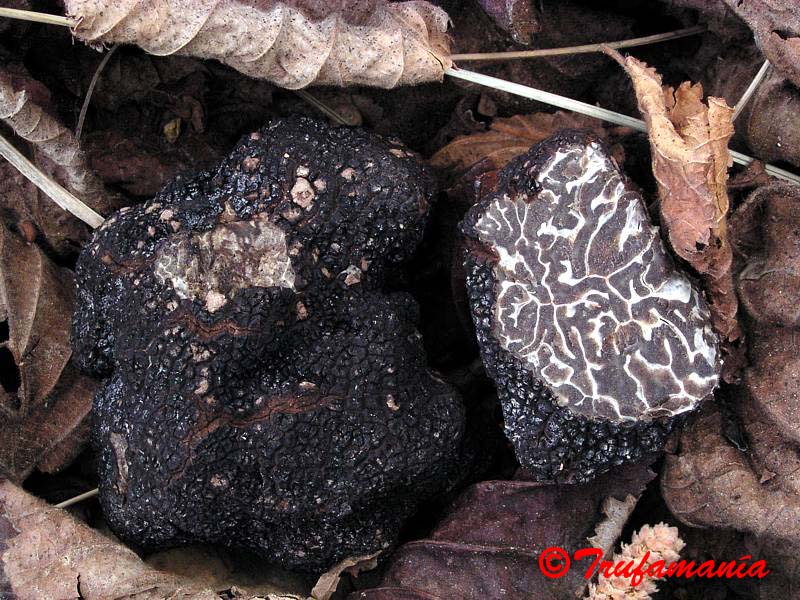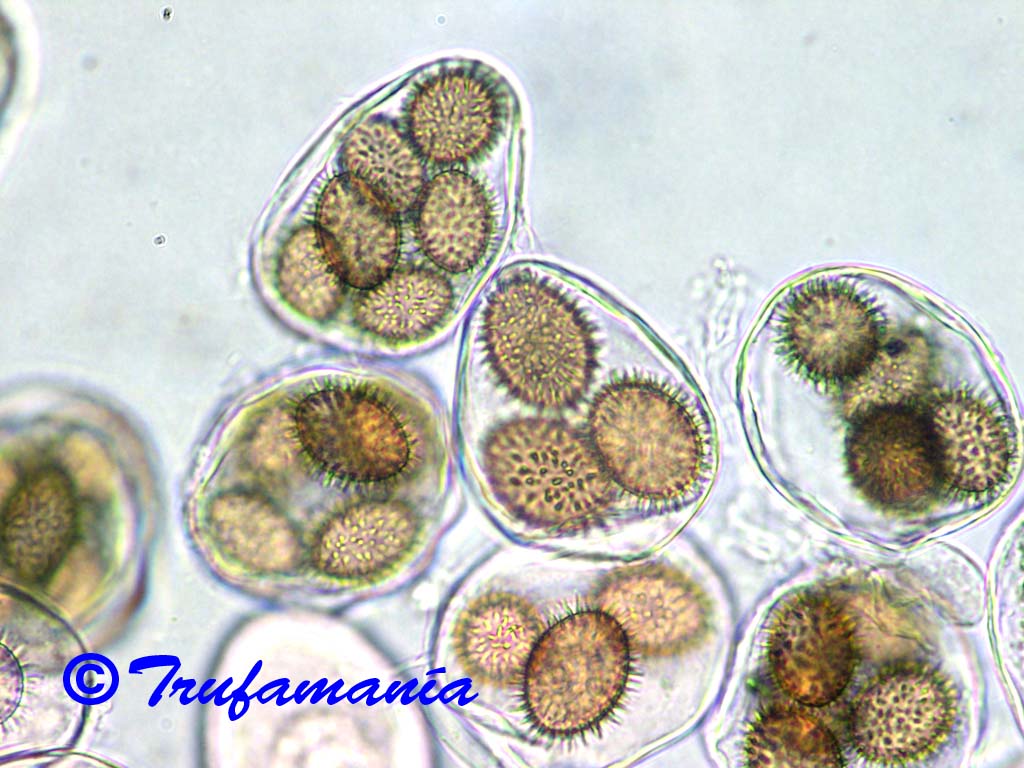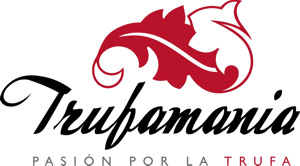TUBER BRUMALE Vittadini
Monographia Tuberacearum 37, Tab. I fig. VI (1831)

(Click on the picture to see more images)
Synonyms:
Tuber brumale Vittadini var. moschatum Ferry de la Bellone (1888)
Macroscopic characters:
Ascomata: hypogeous, subglobose or irregular in form, tuberiform, lobed, often with a basal depression, 2-5 (10) cm in size, warted, black, sometimes reddish at base of warts. Warts 1-3 mm across, usually smaller than those observed in Tuber melanosporum, pyramidal, 5-6-sided, flattened, often depressed at the apex, vertically fissured. Warts come off easily when the truffe is brushed.
Gleba: firm, solid, whitish at first, becoming gray-brown or gray-black at maturity, marbled with a few, broad, widely spaced, white veins that do not change colour when exposed to the air. Tuber brumale sometimes have more numerous and thinner veins, but you can distinguish from Tuber melanosporum veins because Tuber brumale veins remain always white.
Odour :strong, variable, pleasant like Tuber melanosporum odour, musky in Tuber brumale var. moschatum, described in the literature as fermented fruit, bitter yeast, nuts, hazelnuts, according Vittadini as the bark of the dogwood (Cornus sanguinea).
Taste: strong, pleasant.
Habitat
Although you can also find Tuber brumale in the same places as Tuber melanosporum and associated with the same trees, Tuber brumale prefers hazels and lindens. It can grow in less calcareous soils and more humid places than Tuber melanosporum. Tuber brumale is considered unwelcome in truffle plantations of Tuber melanosporum.
Notes:
Tuber brumale is a very variable species which has led to the creation of many forms, varieties, subspecies and even new species. It could be included as synonyms: Tuber hiemalbum Chatin (1869), Tuber renati Bonnet (1884), Tuber montanum Chatin (1891), Tuber moschatum Bonnet (1869), Tuber moschatum Bonnet var. suaveolens Ferry de la Bellone (1888), Tuber moschatum Bonnet var. graveolens Ferry de la Bellone (1888), Tuber melanosporum Vittadini var. moschatum (Ferry de la Bellone & Bonnet) Chatin (1892). Gastronomically appreciated. There are differences between different forms and varieties. Tuber brumale var. moschatum is the least appreciated.

(Click on the picture to see more images)
Microscopic characters:
Asci: subglobose to broadly ellipsoid, sessile or short-stalked, 60-90 x 50-70 µm, 1-6-spored (usually 4-5-spored).
Ascospores: 22-40 x 16-27 µm excluding ornament, size variable depending on number of spores in the ascus, Q range = 1,37-1,57, ellipsoid, light brown, yellowish-brown at maturity, translucent, densely ornamented with stiff, pointed spines, straight or curved, 3-5 (-7) µm long (longer and thinner than Tuber melanosporum spines).
Peridium: pseudoparenchymatous.
| Antonio Rodríguez trufamania@gmail.com antonio@trufamania.com |



